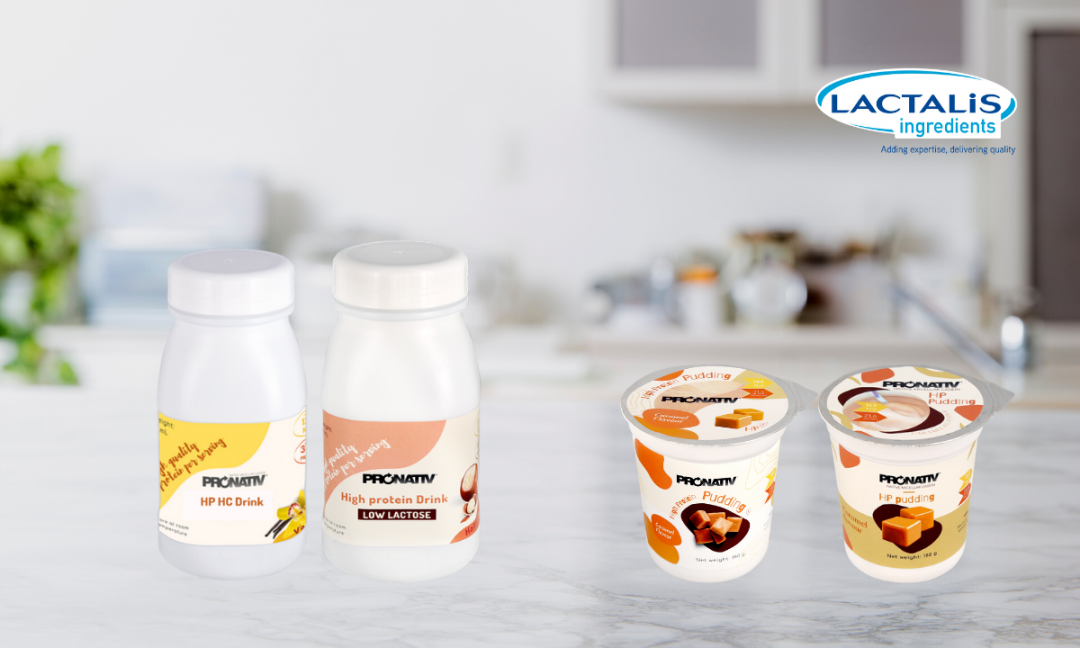
Tapping into texture to diversify your ONS offer
The ageing population: a driver of the clinical nutrition market
Today the clinical nutrition market is a dynamic market estimated to be over $20 billion1. By 2027, it is expected to reach $34 billion1. There are different drivers such as the ageing population, the increase in metabolic diseases and the rise in prevalence of chronic diseases.
Actually, proteins are necessary to prevent muscle loss starting around 40 years old
The senior population represents an important target of this market. Between 2015 and 2050, it is estimated that the geriatric population (aged 60 and over) will have increased by 34%2. In order to prevent certain age-related diseases, such as sarcopenia (age-related muscle loss), diet plays a key role thanks to its protein intake.
Actually, proteins are necessary to prevent muscle loss starting around 40 years old. With anabolism (i.e. the mechanisms by which muscles get build-up from the ingested proteins) becoming less effective, the quality and quantity of proteins will be both key criteria for the proper physiological functioning of muscle. Compared to a young adult, the optimal amount of protein is increased for people over 65 years old. Furthermore, the quality of the protein is defined according to its digestibility, amino acid profile and leucine content (specific amino acid to initiate muscle anabolism).
Oral Nutritional Supplements (ONS) at the heart of the dietary strategy
For the most fragile people, such as the elderly or people with malnutrition problems, the need for proteins must be met by a more adapted diet. Indeed, the general diet does not provide all the necessary proteins and the use of Oral Nutritional Supplements is a way to meet these needs.
The ONS are key foods in the nutritional strategy: they represent almost 60% of the clinical nutrition market
The ONS are key foods in the nutritional strategy: they represent almost 60% of the clinical nutrition market3. They exist in different forms: beverages, puddings, soups, biscuits, powders, etc. They are foods that present strong compliance issues.

Taste, texture and format are factors that need to be worked on to promote their acceptability to patients. When ONS are fortified with protein, these criteria need to be addressed even more carefully: the texture may be too thick for some product forms (puddings and drinks), the taste may be bitter, and the consumption time of the product may be reduced.
The use of Lactalis Ingredients’ protein through product concepts
At Lactalis Ingredients, the objective is to produce ingredients that will best meet the challenges of clinical nutrition: good products rich in protein thanks to the Pronativ® range. This range is composed of native micellar casein (a slow digested protein, ideal for periods of fasting) and native whey protein (a fast digested protein, improving muscle function). Both are composed of a high content of essential amino acids, especially leucine.
At Lactalis Ingredients, the objective is to produce ingredients that will best meet the challenges of clinical nutrition: good products rich in protein thanks to the Pronativ® range
Both proteins have their own functionalities.
| Native Micellar Casein | Native Whey Protein | |
| Heat resistance |
|
|
| Texture | Low viscosity, similar to condensed milk. |
|
In order to implement these proteins, several product concepts were made (one portion is equal to 250 ml):
-
- A high-calorie high-protein UHT beverage (32 g of protein/serving) made with native micellar casein
- A high-protein UHT beverage (18 g of protein/serving) made with native micellar casein and native whey protein
- A protein-rich creamy pudding (21 g of protein/serving) made with native micellar casein
- A protein-rich pudding with a flan texture (21 g of protein/serving) made with native micellar casein and native whey protein.
If you would like to learn more about these concepts, we invite you to watch our webinar replay.
References:
[1] Based on Global Market Insights, Clinical Nutrition 2021-2027. (Without infant nutrition)
[2] OMS
[3] USDEC, 2016















